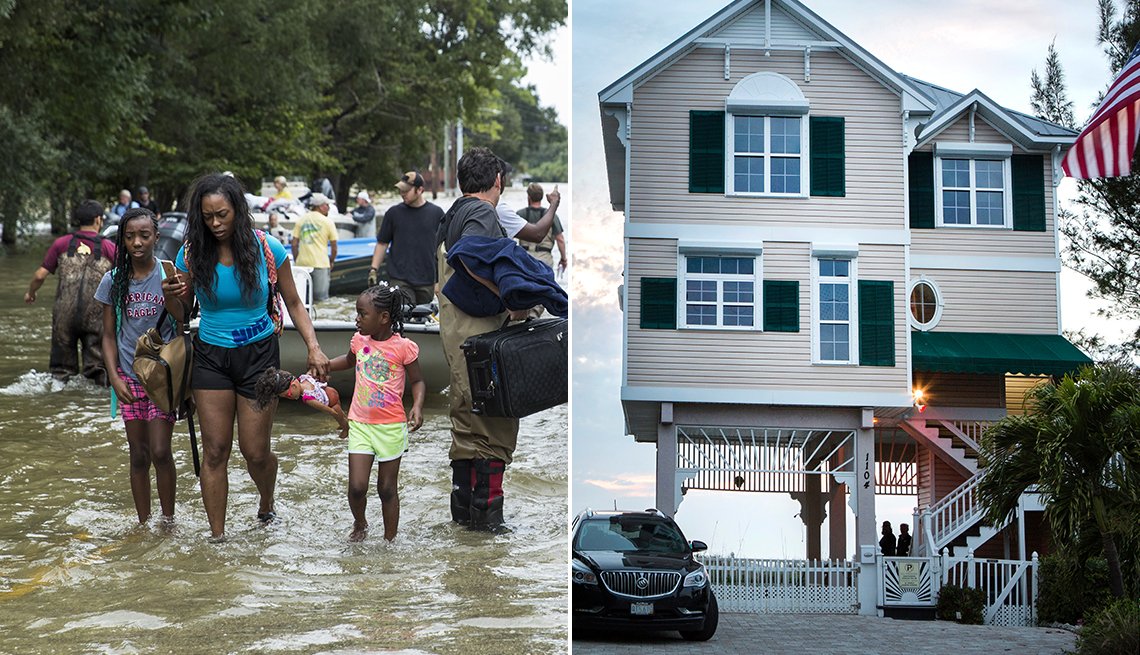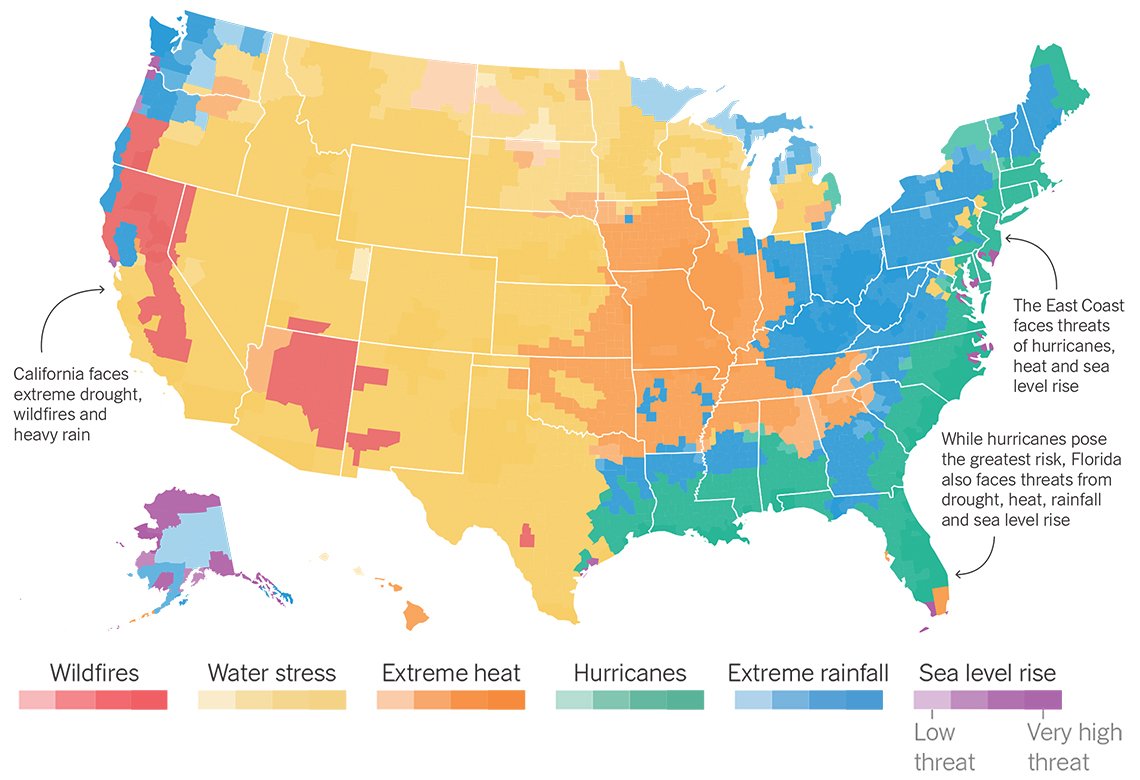Risk: Hotter temperatures
Impact: A shifting retirement map
The hot new destination for your golden years might be one that isn't so hot. “Retirees are likely to skip the Sunbelt in favor of mid-Atlantic states, the New England coast and the Midwest, because of climate changes,” says Cornell University gerontologist Karl Pillemer.
As temperatures and sea levels rise, places like Toledo (Ohio), Boise (Idaho) and Burlington (Vermont) may emerge as safer havens for migrating older Americans. The northern Minnesota city of Duluth has even been referred to, somewhat in jest, as America's “most climate-proof city.”
"Inland U.S. cities at higher latitudes and elevation are better insulated from extreme heat and coastal flooding,” says Jesse M. Keenan, an associate professor of real estate at Tulane University and an expert on climate adaptation and design. He points to “signs of retiree mini-booms in towns throughout the Appalachian and Blue Ridge mountains,” where there are lower environmental risks than in previous coastal hot spots, as well as lower costs of living.
Forbes now factors climate risk into its annual roundup of 25 retirement dream towns. “When you consider the wildfires, drought and mudslides in California, the 100-plus-degree days in Arizona, and hurricanes and flood surges in Florida, you start to think differently about where you want to enjoy your carefree years,” says Forbes contributor William P. Barrett. That's one big reason Fargo, North Dakota, is the only place that has made the Best Places to Retire list for all 10 years the magazine has compiled it. “In picking places for retirement, it's important to think about things like overall cost of living, access to medical care, walkability and crime rates,” Barrett says. “But you also want to go outside without broiling or constantly worrying about evacuating to higher ground.”
Impact: Falling home values
In real estate circles, they're calling it the coastal housing crisis, brought on by rising seas and nuisance flooding. With ocean levels predicted to increase in the U.S. by as much as 2 feet by 2045 and as much as 6 feet by 2100, it might be time to rethink that beach house. The threat is already taking a toll on prices in high-risk parts of Florida, even as the broader real estate market sees gains and as rich tech bros flock to Miami. “Housing sales in the most exposed coastal areas of Florida quietly began falling in 2013, and more recently, home prices started dropping — all directly related to climate changes,” says Benjamin Keys, a professor of real estate and finance at the University of Pennsylvania's Wharton School. His 2020 research paper on 1.4 million real estate transactions found that the number of home sales dropped by 16 to 20 percent between 2013 and 2018 in Florida communities closest to the water. “This is a case where water can literally erode the value of your most precious investment,” Keys says.
In other parts of the U.S., rising sea levels sank home values in 18 states, from Maine to Texas, by $15.9 billion between 2005 and 2017, according to research released by the nonprofit First Street Foundation. That included 81,900 homes in coastal North Carolina — picture the hurricane- and flood-ravaged Outer Banks — that lost $582 million in value. Tidal flooding along the Mississippi Gulf Coast, including the devastation of Hurricane Katrina, eroded around $264 million in home values over that same 12-year period.
As with water, so it is with fire. Following catastrophic blazes in 2018 that severely damaged the Northern California town of Paradise, home values dropped 20.5 percent between October 2019 and October 2020, according to the real estate website Redfin.
Interestingly, in California, fires can also stoke the market, as burned-out buyers scramble to find new homes nearby. Sales in fire-ravaged Napa County were up 40 percent in the third quarter of 2020 over the same time period the previous year, and up more than 50 percent in that same period after fires in Sonoma County.
If you won't give up that dream of living on the ocean in your retirement years, S. Jeffress Williams, a senior scientist emeritus with the USGS Woods Hole Coastal and Marine Science Center in Massachusetts, offers this simple advice: “Don't buy — rent."
Impact: More fortified houses
About 3 out of 4 adults 50 and older want to stay in their residence as long as possible, according to a 2018 AARP survey. But that may require significant upgrades as heat waves, floods and wildfires impact our homes.
Among potential concerns: mold in basements and on floors, roof damage from high winds and loss of power from storms, says Carlos Martín, a senior fellow at the Urban Institute's Metropolitan Housing and Communities Policy Center.
This is forcing many homeowners to make their structures more climate-resilient. For example, people who live near areas prone to wildfires may need to upgrade their air-filtration systems. If you're in a flood zone, consider moving utility equipment out of the basement to a spot above ground. And your air-conditioning unit may need to be replaced with a more efficient model that can cool your home better. In some places, new construction or even renovations focus on elevating homes and making them stronger and more resistant to wind and water.
Many people are already taking action; spending on backup electrical generators rose 36 percent between 2016 and 2019, to some $6 billion a year, The Wall Street Journal reported. And metal roofs — considered best able to withstand high winds — are in demand. The Metal Roofing Alliance reported that 8 percent of all newly built homes in 2019 were outfitted with metal roofs, double the market share of 2018. The industry attributes this interest primarily to more extreme weather.




 RSS Feed
RSS Feed